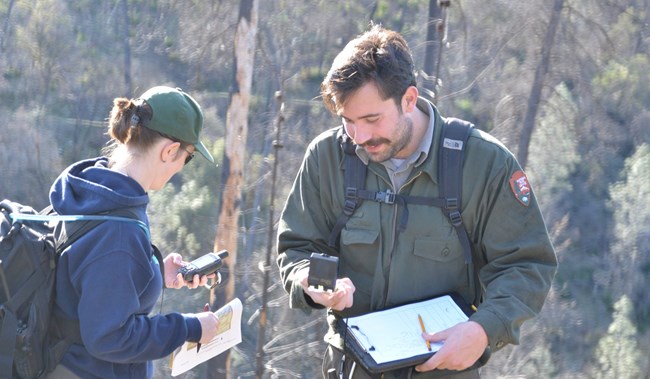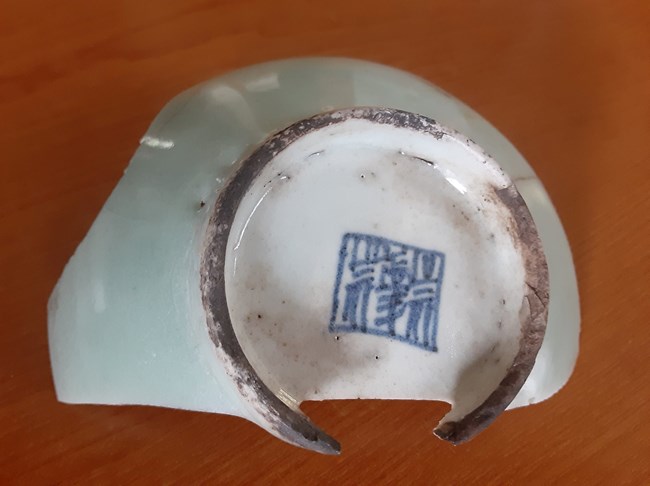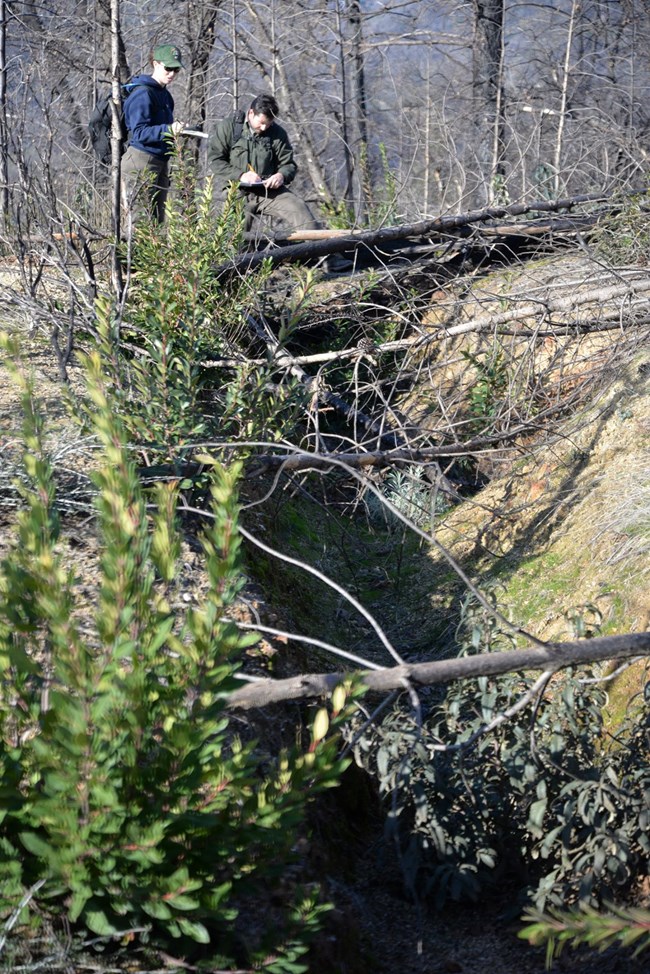
"The post-fire environment has been incredible for archeology." This is what John Fable bluntly told me when I sat down with him on his final day of employment in the park late last year. The Carr Fire of 2018 was the most destructive fire in National Park System history, and much of Whiskeytown's understory shrubs, trees and grasses burned. The fire removed massive amounts of vegetation and soil, and this left unprecedented amounts of previously unknown artifacts at or near the surface. The fire also opened up the landscape to features of cultural importance that had never before been historically documented. Arrive John Fable. An archeologist by training, Fable moved to Whiskeytown from small-town Montana in the summer of 2019. During his short but sweet year of post-fire employment here, John served as the field archeologist. That is, Fable literally spent hundreds of hours off trail crisscrossing the park's rugged terrain searching for artifacts and other cultural landscape features. Upon discovery, he analyzed the artifacts and then formally documented them for recordkeeping and posterity. So, what did Fable find because of the fire? Literally over 1,000 artifacts if you consider each ceramic fragment! More generally, however, here are three of his key discoveries... 
If you are like me, the common image of a California goldminer etched into your mind's eye is a white, European American male, perhaps from the East Coast or England. Yet while white males were prevelant, the 1850s scene in and around Whiskeytown was also diverse. Fable's archeological findings prove that the present-day national recreation area was home to not only white miners but also Chinese and female miners. Historic census data backs this up. In a couple different areas of the park. John found pieces of pottery with Chinese characters. We were able to identify one shard as belonging to the Qing Dynasty Period. The characters translate to "Lucky Great Mountain." The pot was brought across the Atlantic Ocean to Whiskeytown by a Chinese miner or laborer. Seeking additional wealth and a better lot in life just like white miners, thousands of Chinese immigrants came to work in the California gold fields. In another location, Fable found broken pieces of a perfume bottle that he was able to trace back to a 1930s company called Mountain Girl. He also found the sole of a female shoe. Indeed, it wasn't just men at the mines; sometimes, women accompanied their husbands or family member or even worked on their own. 
Prior to Fable, we knew there were roughly 40 miles of water ditch remnants within the park, but because of his findings, we now know that there are dozens more miles of these water conveyance systems. As he described it to me during the interview, in some places, there are water ditches practically one on top of another on top of another. Think of Highway 299 running through the park, and then imagine another Highway 299 paralleling it, and then another, and another. This was the extent of water ditches in the middle and late 1800s through the 1940s. Dug manually by pick and shovel with each ditch often spanning miles, water ditches carried steady and powerful supplies of water via gravity for use in mining operations. What John's findings confirm and reaffirm is that although much of the park has reforested over the past several decades, it was formerly a working landscape - a resource extraction landscape. In the mid-1800s, mining features could be found in practically every nook and cranny of Whiskeytown. Evidence of water ditches remain visible in much of the park and several trails parallel or go directly on top of former ditches. Crystal Creek Water Ditch is the best preserved and a one-mile trail parallels it within the Tower House Historic District.
Conclusion John's findings represent a golden era of park archeology, courtesy of the Carr Fire. There are silver linings to the most destructive fire in National Park System history. While post-fire archeology continues at Whiskeytown, we'd like to remind visitors that if you come across an artifact, please leave it in place - admire it, ponder it, but do not remove it. Other than being a federal offense punishable by fine and/or imprisonment, removing the park's cultural resources removes part of the park's heritage, and this is a heritage that belongs to all, not just one unlawful or unknowing individual. Please leave archeology to the trained archeologists employed by the park; they can then correctly document it and then we can correctly share information about archeological findings - like in this article! Final Note: John now serves as a District Archeologist for the U.S. Forest Service in Northern California. |
Last updated: July 23, 2021
